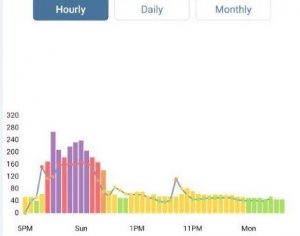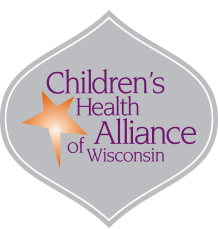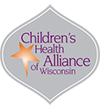By: Langston Verdin
Leader of Strategic Partnerships, Children’s Health Alliance of Wisconsin
Fireworks are known to cause short-term, very high-intensity air quality degradation, especially atmospheric particulate matter (PM) pollution.[1],[2] For people with asthma, fireworks displays can be particularly problematic.[3] If your neighborhood was anything like mine the last month and a half then you have been privileged to nightly firework displays put on by your neighbors. This made me think: with most large community firework shows canceled, how do these smaller neighborhood firework displays impact air quality?
To find out, I checked the smartphone app for our neighborhood-level air quality sensor that the Wisconsin Asthma Coalition is testing to understand the linkages between neighborhood air quality and asthma. The AirVisual Pro sensor we use tracks Air Quality Index (USAQI) which is a composite measure of air quality and pollutants including: atmospheric particulate matter (PM2.5 & PM10), Ozone (O3), Nitrous Dioxide (NO2) and humidity.
What I saw concerned me.
This image is a screenshot from the IQ Air app after the fireworks on evening of Saturday, July 4th near 58th Street and Lloyd Street on Milwaukee’s westside. 
As you can see, as soon as the sun began to set and people began celebrating the 4th by launching their fireworks, the air quality quickly began to worsen.
At about 8pm, the USAQI jumped from ~63 (moderate), which is not unusual because of the high humidity and increased ozone this time of year, to ~169 (unhealthy) and peaked at ~267 (very unhealthy). According to the USAQI scale, when the air quality reaches 150, everyone may experience health effects and members of sensitive groups may experience more serious health effects. At 201, all people are likely to be affected and should take measures to limit exposure by limiting outdoor activities, especially people with asthma. This means limiting all outdoor activities, moving indoors, or wearing a mask.
What we see from our sensor is that fireworks can have a sudden (but luckily short) impact on air quality and I believe that information such as real-time, neighborhood-level air quality monitoring can be an extremely important tool for people with asthma. So, if you have asthma or other respiratory issues please enjoy fireworks from a safe distance (preferably inside, behind a closed window).
The Wisconsin Asthma Coalition is piloting a network of neighborhood-level air quality sensors in communities in Southeastern Wisconsin with high asthma burden. To learn more or to participate, email Langston Verdin at lverdin@chw.org.
_______________________________________________________________________________________
[1] Zhang J, et al. (2019). Detailed measurements of submicron particles from an Independence Day fireworks event in Albany, New York using HR-ToF-AMS. DOI: 10.1021/acsearthspacechem.9b00046
[2] Seidel DJ, et al. (2015). Effects of Independence Day fireworks on atmospheric concentrations of fine particulate matter in the United States. DOI: 10.1016/j.atmosenv.2015.05.065
[3] Gouder C, et al. (2014). Potential impact of fireworks on respiratory health. DOI: 10.4103/0970-2113.142124


